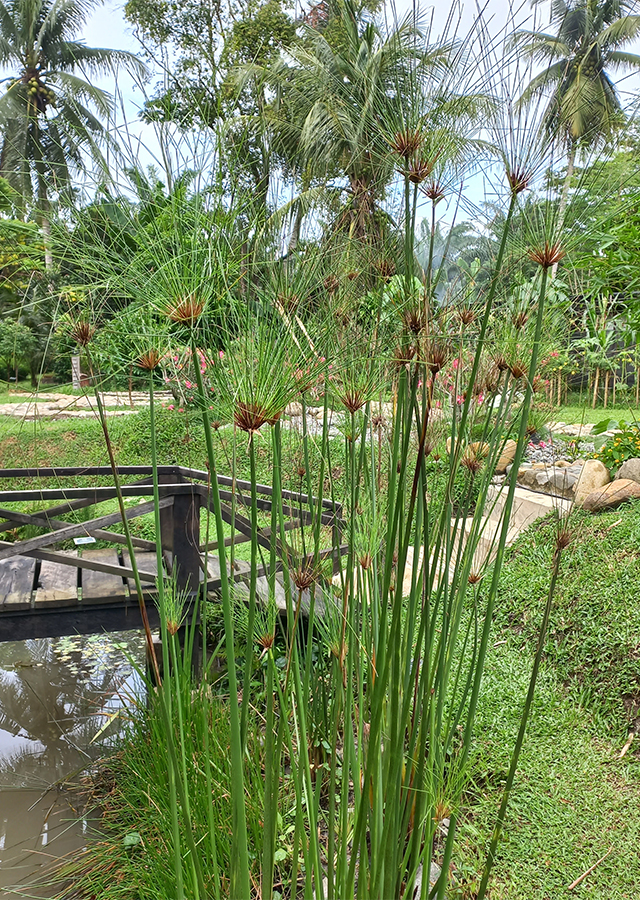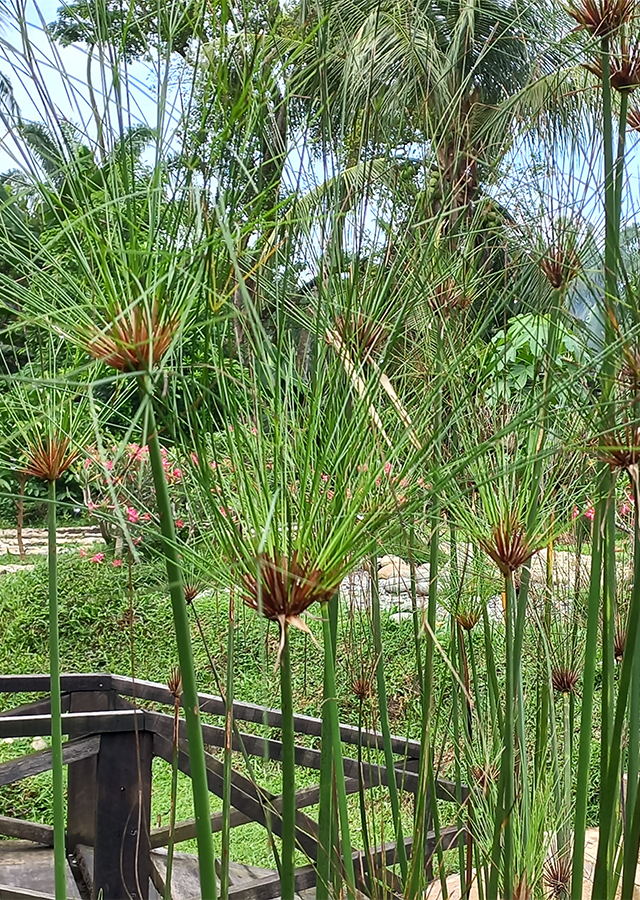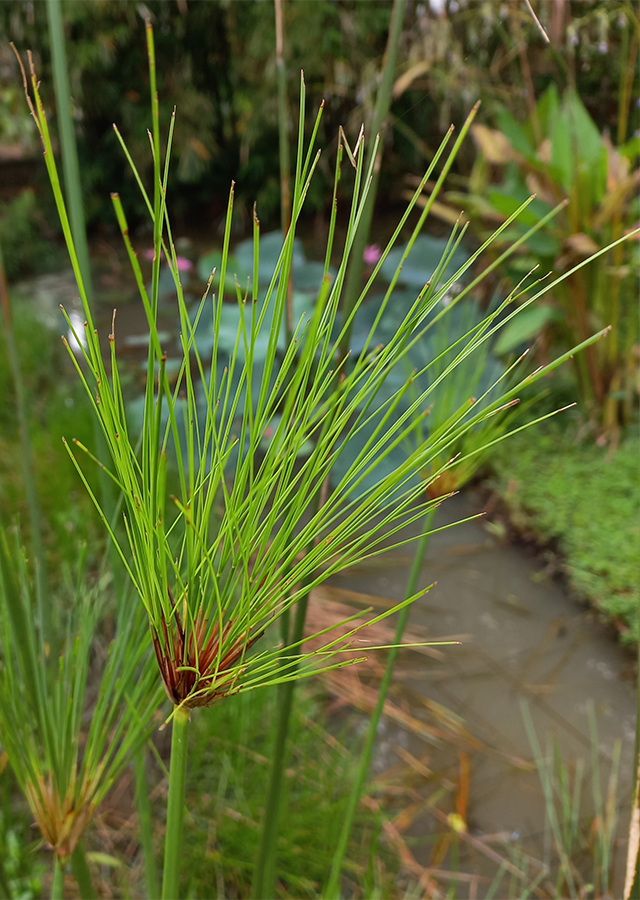Traditional Herbs from Cyperus papyrus
malignant_boils_so_they_don't_spread_in_the_mouth_or_other_places
- Take enough papyrus leaves.
- Burn the leaves until they become ash.
- Apply the ashes to the boils.
heal_wounds
- Take enough papyrus leaves.
- Marinate\u00a0the leaves with vinegar then burn it until it turns to ashes.
- Apply the ashes to heal wounds.
What is Cyperus papyrus Looks like??



Parts of Cyperus papyrus that could be used
- Leaves", "Flowers", "Roots", "Stems", "All Parts of the Plant
Cyperus papyrus Distribution
Papyrus is native to Africa, Madagascar, and Mediterranean countries and has been introduced as an ornamental plant, to other warm climates of the world. In its native environment, this plant has been used for thousands of years for various functions, namely as food for humans and livestock, a source of herbal medicines, a source material for making paper (papyrus), woven cloth, ropes, boats, wickerwork, brooms, mattresses, pillows, fences, and materials for traditional house construction (roofs, floors, windows, doors). Papyrus was a popular plant in Egypt and was used as early as 2400 BC for food, medicine, fiber and shelter. The papyrus pith can be consumed as food, while the starchy rhizomes and lower stem pieces can be consumed raw (like sugar cane), boiled or roasted. Other sources say that papyrus is one of the native marsh plants used by the Arabs of Southern Palestine as a basis for the woven and mat industry. This plant is also a favorite ornament in ancient arts and crafts. Now, papyrus can be used as a potential source of material for biofuel, an effective natural biofilter for water pollutants. However, in other countries, due to its rapid growth, it is often considered a serious invasive threat to native species and ecosystems and can also obstruct the flow of waterways. In its use as a medicinal plant, papyrus is a plant that has many health benefits. The ashes from burnt papyrus are used for certain eye diseases. Other sources also say that the ash produced from macerating papyrus in vinegar and then burning it can heal wounds and Europeans included it in their traditional cancer medicine. The stem extract can be used as an ingredient in commercial cosmetic preparations as an antioxidant and skin conditioner.Agroecology of Cyperus papyrus
Papyrus can be found growing both in swamps and along the shores of lakes and rivers, at altitudes ranging from sea level to 2,500 m above sea level. Its growth requires environmental conditions with annual rainfall of 100-4,200 mm, annual temperature ranging between 20-30 °C and soil acidity (pH) of 6.0-8.5. Prefers a position in full sun but is tolerant of partial shade, as well as fertile, wet soil or shallow water to a depth of 30 cm.
Morphology of Cyperus papyrus
- Strong roots, producing short rhizomes covered with thick, spreading black scales.
- Stems erect, sturdy, triangular in shape (very rounded corners, especially at the bottom), have green, fibrous outer skin, smooth surface. Inside stems are white-light brown, veins are prominent.
- Leaves are narrow, sheathed and limited to the base of the stem about 50 cm long.
- Compound flowers, shaped like an umbrella (umbel). , brown, lanceolate, curly when dried. There are 3 stamens with fine, elongated filaments. The inflorescences are lanceolate, pale brown, never green. trigonous beans, gray in color, almost smooth surface.
- Seeds are small, elliptical-oval in shape, brown.
Cultivation of Cyperus papyrus
Propagation is carried out generatively (seeds) and vegetatively (rhizome pieces).
Cyperus papyrus, more details :
Chemical Content of Cyperus papyrusAlkaloids tyramine, octopamine, essential oils (caryophyllene oxide, cyperene, 1,8-cineole, humulene epoxide II, aristolene, and aromadendrene epoxide II).
Benefits of Cyperus papyrus
Treats certain eye diseases, prevents malignant boils from spreading in the mouth or elsewhere, heals wounds, cures cancer, cares for pregnant women, treats edema, female infertility, coughs, acts as an antioxidant and conditioner for the skin.
Simplisia of Cyperus papyrus
Another Facts for Cyperus papyrus :
Synonym of Cyperus papyrusChlorocyperus papyrus (L.) Rikli
Habitus of Cyperus papyrus
Herb. Annual herb, up to 5 m high
Habitat of Cyperus papyrus
- Wetland
- Riverside
- Land
No comments:
Post a Comment